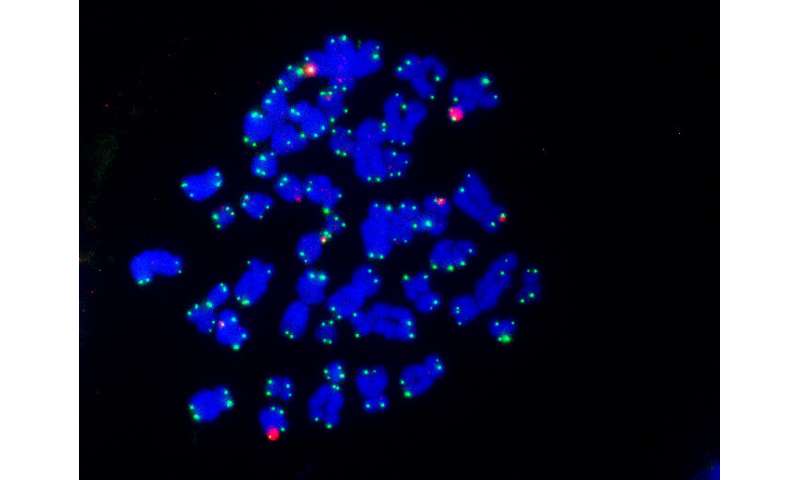
Faster cancer treatments may be possible thanks to research from Children’s Medical Research Institute (CMRI).
Researchers were surprised to discover a new way that an enzyme in cancer cells, telomerase, acts to keep cancer cells multiplying. This could mean a faster way to stop cancer cells in their tracks. Tracy Bryan, the lead author on research released in Science Advances, was initially skeptical of the findings.
“We were very surprised at the direction this research took. I was very skeptical that telomerase could protect DNA in a way that we didn’t know about. However, our Ph.D. student, Omesha Perera, convinced me that what we were seeing was an entirely new role for the hTERT component of telomerase in keeping cancer cells alive. The evidence was too strong to ignore.”
Cells of the body naturally stop dividing after a certain number of divisions. Each time a cell divides, the protective tips at the end of DNA strands shorten and eventually the DNA itself frays and the cell dies. Cancer cells can continue to multiply past natural limits by using telomerase to lengthen the protective tips of their DNA. Because telomerase is quite specific to cancer cells, researchers have focused on suppressing its ability to lengthen the protective DNA tips. But so far, suppressing telomerase’s ability to lengthen cancer cell DNA has proved to be too slow for stopping cancer cells.

“One of the disadvantages of suppressing only the known—catalytic—activity of telomerase is the lag-time that it takes for cancer cells to die. Even once you stop the telomerase’s catalytic activity, cells must still undergo many divisions before the DNA’s protective tips have sufficiently frayed enough for them to die. Inhibiting the catalytic activity of telomerase just isn’t fast enough.
“But this research has shown that the catalytic activity isn’t the only way that telomerase keeps cancer cells alive. We’ve shown that the hTERT component of telomerase works to actively recruit other proteins known to protect the cancer cell DNA.
Source: Read Full Article
